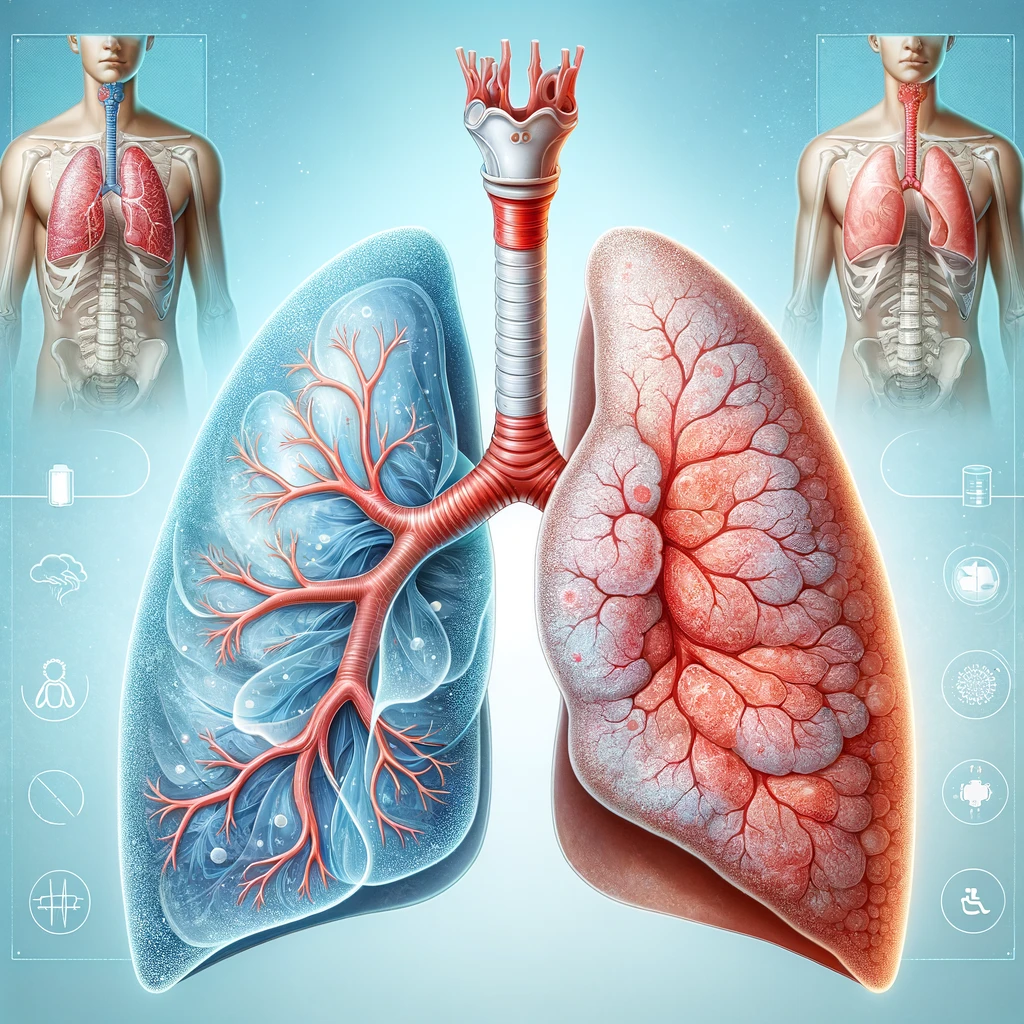Asthma is a chronic respiratory condition that affects millions of people worldwide. It is characterized by episodes of wheezing, breathlessness, chest tightness, and coughing. But when it comes to classifying asthma, a common question arises: Is asthma an obstructive or restrictive disease? Understanding this classification is crucial for effective treatment and management.
Asthma can significantly impact a person’s daily life, limiting their ability to engage in physical activities, work efficiently, or even get a restful sleep. The chronic nature of the disease requires consistent medical supervision and a proactive approach to symptom management. While various treatments exist, identifying the nature of the disease is the first step toward effective control and improved quality of life.
What is an Obstructive Lung Disease?
Obstructive lung diseases occur when airflow is restricted due to inflammation, mucus buildup, or airway constriction. This makes it difficult for air to move out of the lungs, leading to prolonged exhalation and increased breathing effort. Common obstructive lung diseases include:
- Chronic Obstructive Pulmonary Disease (COPD)
- Emphysema
- Chronic bronchitis
- Asthma
Since obstructive diseases prevent air from being exhaled efficiently, they lead to increased lung volumes and hyperinflation, making breathing more labored over time. Individuals with these conditions may experience fatigue, difficulty in performing physical activities, and frequent respiratory infections due to airway obstruction.
What is a Restrictive Lung Disease?
Restrictive lung diseases, on the other hand, limit lung expansion, reducing lung volume and making it harder to inhale fully. This occurs due to stiffness in the lung tissue or external factors restricting lung movement, such as obesity or neuromuscular disorders. Common restrictive lung diseases include:
- Pulmonary fibrosis
- Sarcoidosis
- Obesity-related hypoventilation syndrome
- Scoliosis-related lung restriction
Unlike obstructive diseases, restrictive lung diseases do not involve airway narrowing but rather a decrease in lung elasticity or structural integrity. The primary symptom of restrictive diseases is shortness of breath, which worsens during physical exertion. Individuals with restrictive lung conditions may struggle with oxygenation, leading to chronic fatigue and decreased physical endurance.
Is Asthma an Obstructive or Restrictive Disease?
The answer is that asthma is an obstructive lung disease. This classification stems from the fact that asthma causes airway narrowing due to inflammation and bronchoconstriction, making it difficult to exhale air properly. During an asthma attack, the airways become swollen and filled with mucus, obstructing airflow and causing difficulty in breathing.
However, in rare cases, severe asthma with prolonged inflammation can lead to lung tissue scarring, which may introduce restrictive-like features. Nonetheless, asthma remains primarily an obstructive disease because its main issue revolves around airflow limitation rather than lung volume reduction.
How is Asthma Diagnosed?
Diagnosing asthma typically involves a combination of medical history evaluation, physical exams, and pulmonary function tests (PFTs). Key tests include:
- Spirometry – Measures airflow obstruction by assessing how much air a person can exhale and how quickly.
- Peak Flow Meter – A simple tool used to monitor airway narrowing.
- Bronchoprovocation Test – Evaluates airway sensitivity to specific triggers.
- Allergy Testing – Helps identify allergens that may exacerbate asthma symptoms.
Early diagnosis is essential to prevent complications and maintain optimal lung function. If left undiagnosed or untreated, asthma can lead to severe respiratory distress, frequent hospitalizations, and a diminished ability to perform daily activities.
Treatment and Management of Asthma
Since asthma is an obstructive lung disease, treatment focuses on reducing airway inflammation and managing symptoms. The primary treatment strategies include:
1. Medications
- Bronchodilators: These help relax the airway muscles and improve airflow.
- Inhaled Corticosteroids: Reduce inflammation and prevent asthma attacks.
- Leukotriene Modifiers: Help block chemicals that cause airway constriction.
2. Lifestyle Modifications
- Avoiding Triggers: Identifying and avoiding allergens such as dust, pollen, and pet dander can help prevent flare-ups.
- Regular Exercise: Low-intensity activities like swimming and yoga can improve lung function without triggering symptoms.
- Healthy Diet: A balanced diet with anti-inflammatory foods can support lung health.
- Breathing Techniques: Practicing deep-breathing exercises can help individuals manage shortness of breath and reduce anxiety related to asthma attacks.
3. Asthma Action Plan
Having a personalized asthma action plan prepared by a healthcare provider ensures better control over symptoms and prevents emergencies. This plan typically includes instructions on daily medication use, how to identify worsening symptoms, and when to seek emergency medical care.
When to Seek Medical Help
If you experience persistent wheezing, breathlessness, or frequent asthma attacks that disrupt daily life, it is crucial to seek professional medical advice. Managing asthma effectively requires regular monitoring and consultation with a pulmonary specialist.
For expert guidance on asthma management, schedule an appointment with Interstate Pulmonary. Their team of specialists can provide comprehensive care tailored to your condition.
Conclusion
Asthma is a prevalent obstructive lung disease that affects millions globally. Its primary characteristic is airway inflammation and constriction, making it challenging to breathe out effectively. Proper management involves medication, lifestyle adjustments, and ongoing medical supervision to prevent severe attacks and improve overall well-being.
For more information on lung health and respiratory care, visit reputable sources such as the American Lung Association and the National Heart, Lung, and Blood Institute. If you or a loved one struggles with asthma symptoms, don’t hesitate to seek expert care at Interstate Pulmonary.
